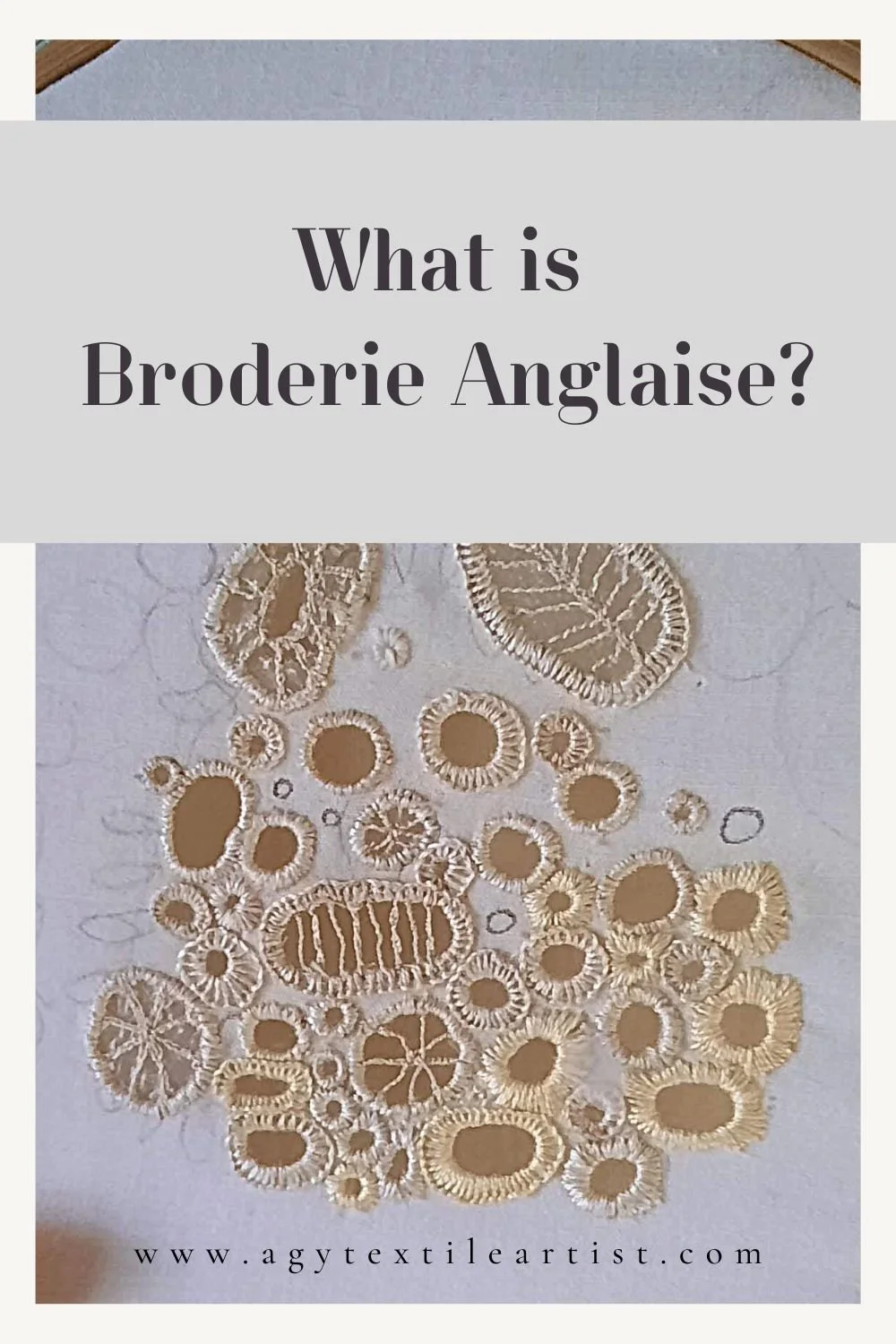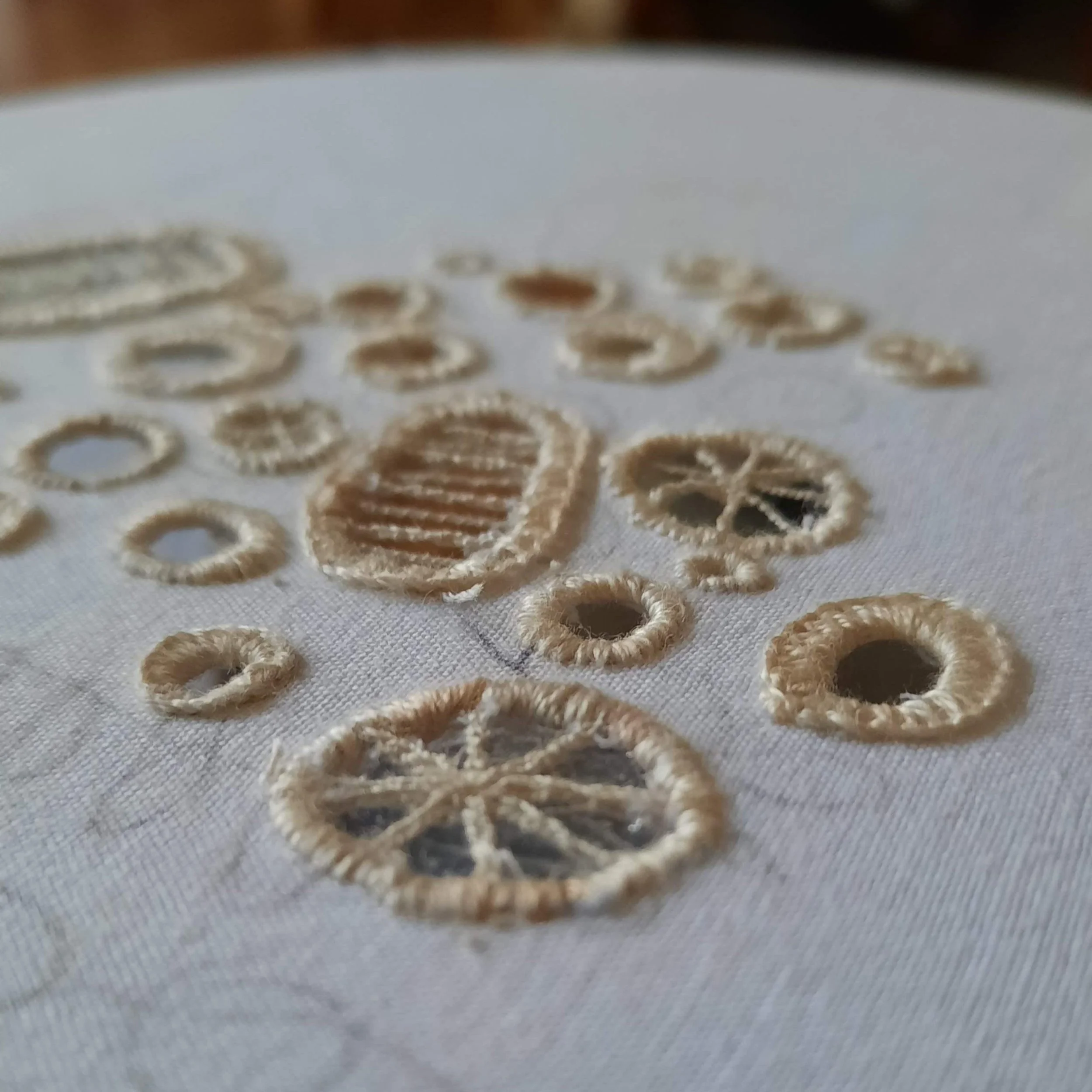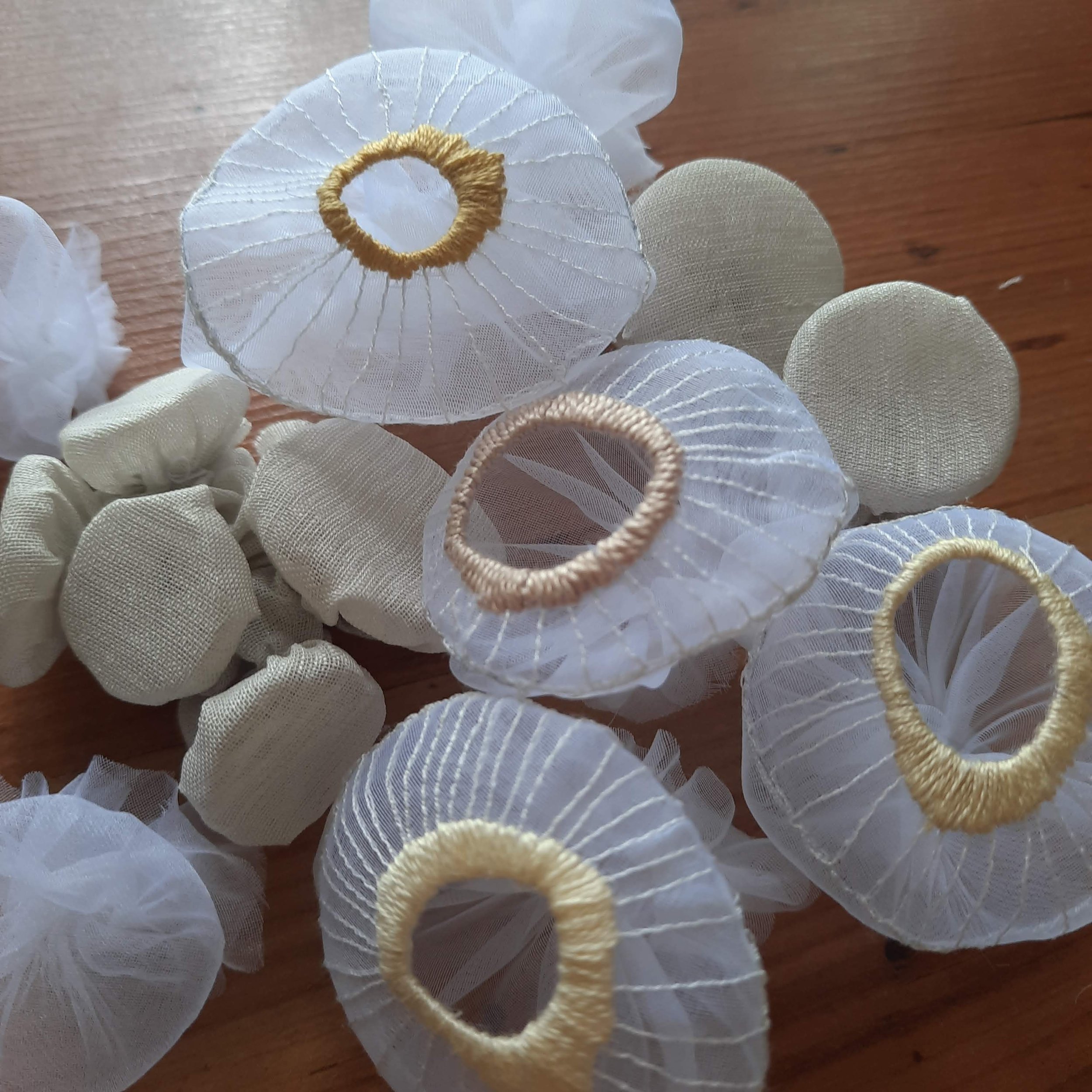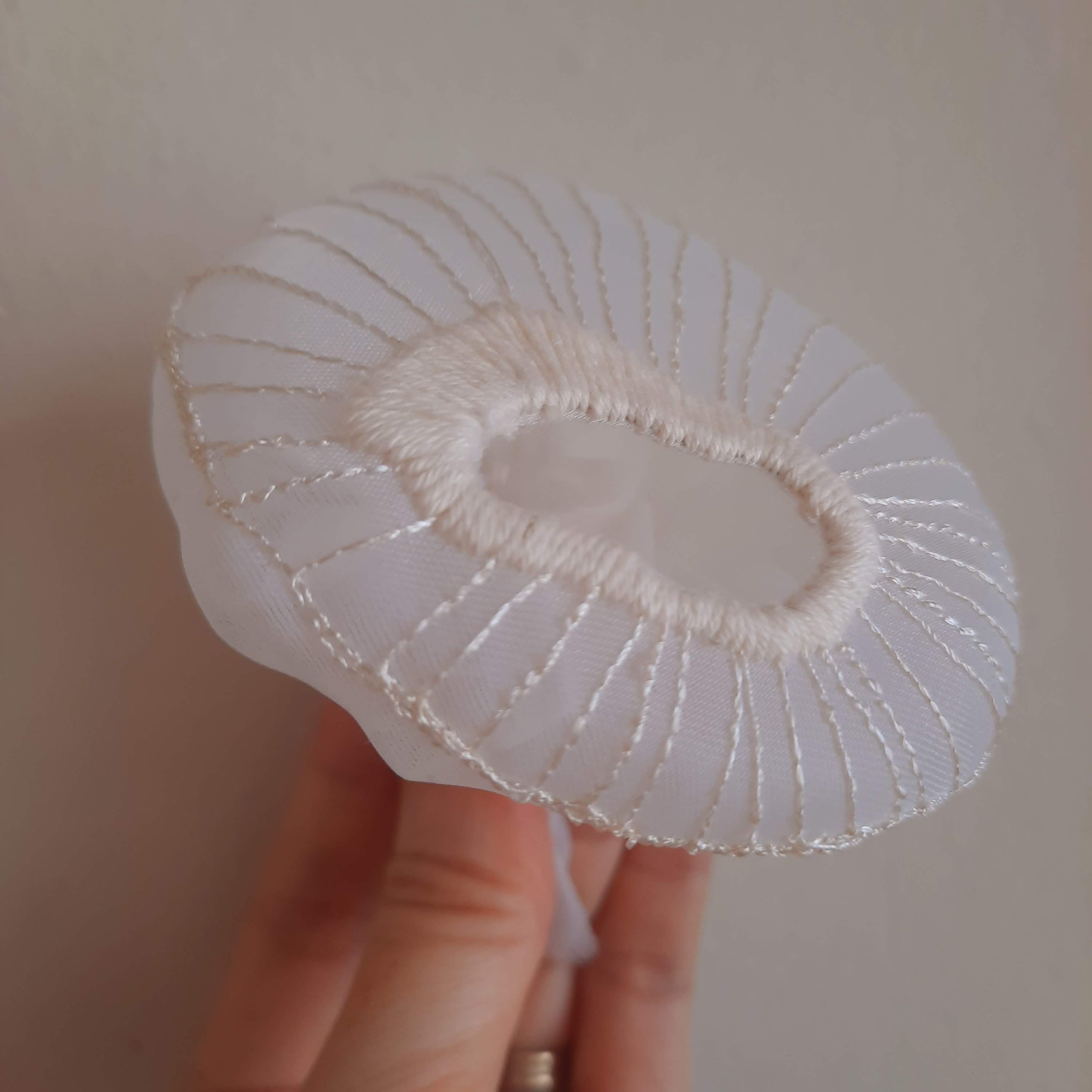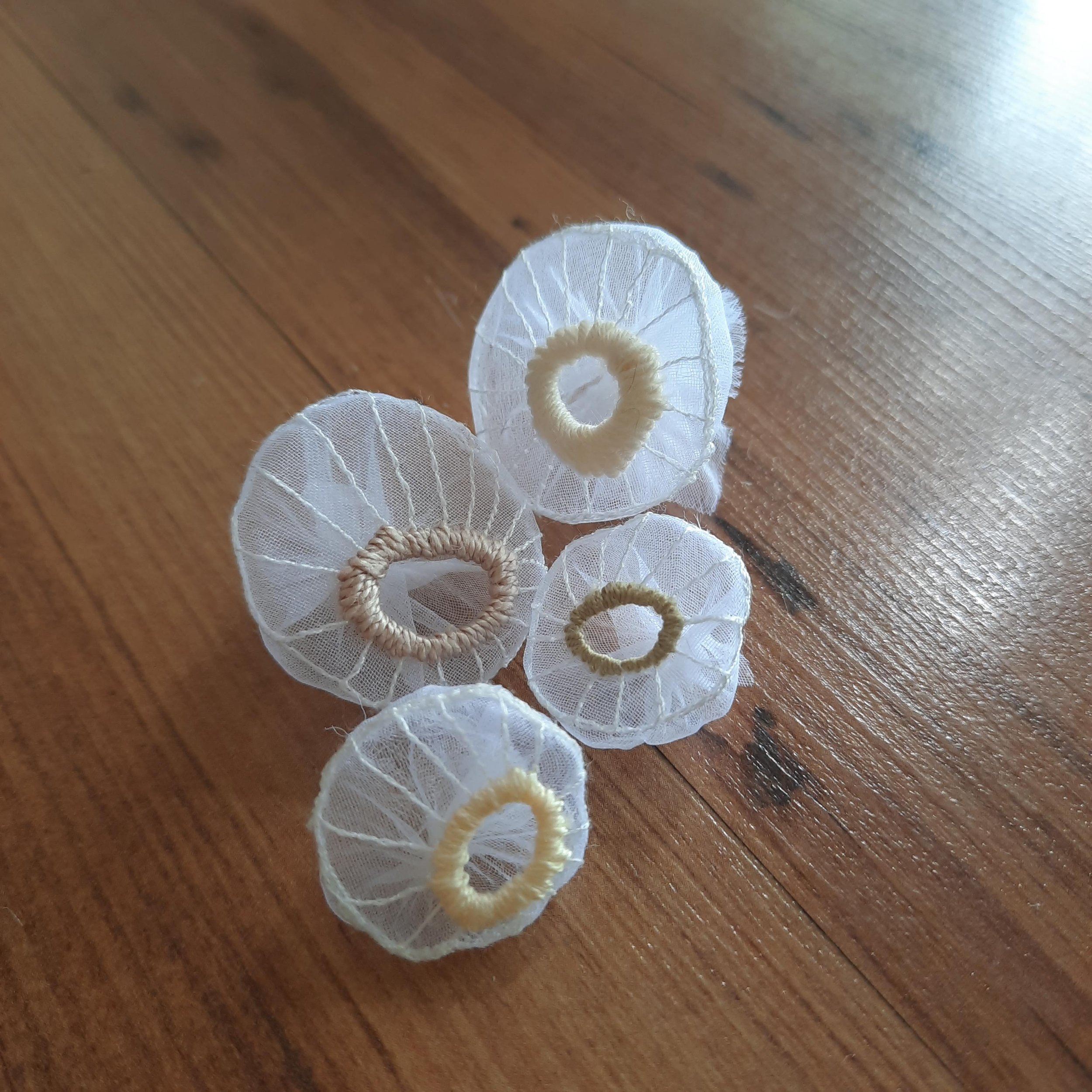Broderie Anglaise in My Textile Art
Broderie Anglaise
If the fashion magazines are anything to go by, one of the trends for Spring and Summer in 2023, is Broderie Anglaise dresses. You might have seen them before when they were last very fashionable over 10 years ago! They are typically white and characterised by round or oval patterned cut-outs in a cotton fabric, giving a delicate, lacy effect. It’s not as delicate as lace, but the cutouts give the feeling that you are wearing a very light dress; perfect for hot summers!
Today’s Broderie Anglaise is most likely produced with precision using laser cutting machines. This has allowed for the Broderie Anglaise effect to be reproduced on other textiles such as leather and felt, which can then be used in areas other than fashion, such as interior design.
Is Broderie Anglaise English?
Broderie Anglaise has been around for a very long time, and even though it translates from French to “English Embroidery” , has its roots in traditional embroidery styles that were popular in Europe during the 16th and 17th centuries. By the 19th century, the style became very popular in England (and hence its name), and lasted until the early 1900s.
During the golden era of Broderie Anglaise, the city of St Gallen, Switzerland, was the world’s major exporter of this type of embroidery, producing clothing, underwear, tablecloths and napkins.
"At that time, two out of three workers earned their living from embroidery. The textile industry was the main source of income for the canton until the First World War. After that the popularity of St Gallen embroidery waned. It enjoyed a brief resurgence after the Second World War, but never regained its former market" Ilona Kos, curator of the Textilmuseum in St Gallen
How was Broderie Angalaise made by hand?
Broderie Anglaise involves tracing a design (usually floral or circular) onto fabric, before using a simple running stitch to “trace the outline”. Then with the help of scissors and an awl punch, small, round or oval holes are created in the fabric - I couldn’t find any awls in Singapore, so I decided to make do with a large knitting needle. These holes are then surrounded by embroidered stitches (satin or overcast stitch), creating a lacy effect. Broderie Anglaise is typically done on a white or cream-colored fabric such as cotton or linen, using a white or ecru-colored thread. I have found that the tighter the weave of the fabric, the more difficult it is to do the embroidery. Nevertheless, the work is very intricate and requires a lot of patience!
As with other embroidery work, lot of time was required to produce Broderie Anglaise by hand, and thus the items made were considered very luxurious, and a sign of wealth. Nowadays, with Broderie Anglaise being made by machine, it is less of a luxury, and associated with casual wear.
Broderie Anglaise in Textile Art
Broderie Anglaise is both delicate and intricate, and I decided to adapt for use in my textile art sculptures, especially the intricate and delicate structure of corals.
Texture - This was a sample I did. I love how Broderie Anglaise allows me to create a textured surface with a three-dimensional feel. By adjusting the number of embroidery threads in my needle, or couching additional threads in the embroidery work, I could create surfaces that mimic the organic shapes and textures of coral structure
Open work - I used the cutout work technique and combined it with free motion embroidery to illustrate the fragility and delicate nature of the corals.
Fabric choice - Broderie Anglaise can be applied to any type of textile provided you have the right tools. I chose both organza and cotton for my series of work to show the fragility and porosity of corals, especially the soft corals. The organza was particularly useful in my project, as it could be manipulated with heat to create the soft sculpture corals.
A new masterclass on Broderie Anglaise is happening in November 2023! Don’t forget to sign up for my newsletter if you can’t make it in Singapore but want to know when the next one is happening!
Learn the basis of Broderie Anglaise
4 Nov 2023, 2 - 430pm

